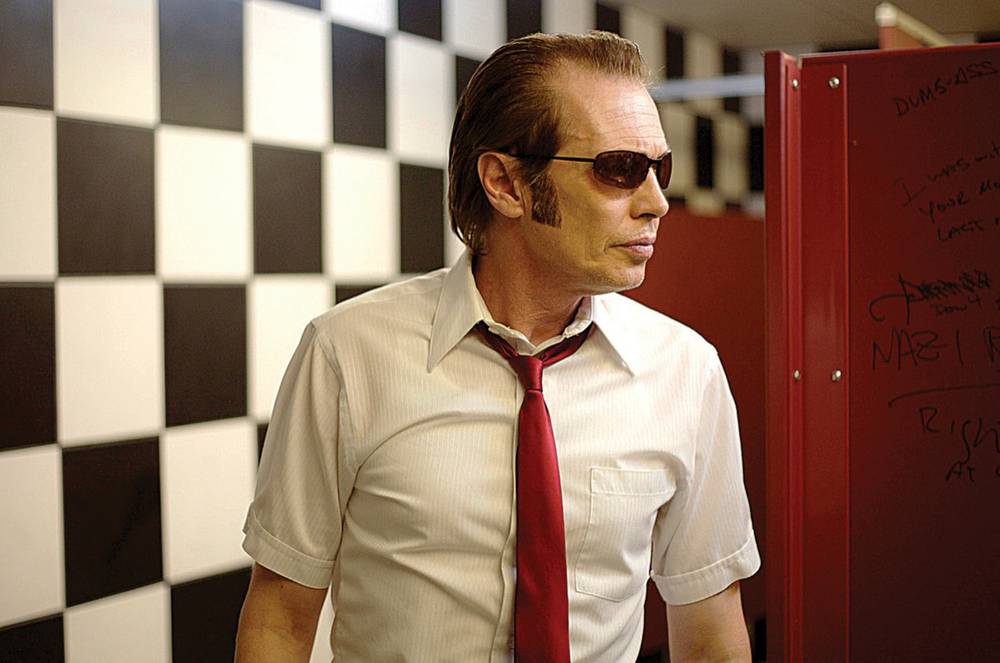The opening film at Cinevegas this year isn’t as high-profile as past offerings The Rocker, Hustle & Flow and Ocean’s 13, but like Ocean’s, it is all about Vegas. Saint John of Las Vegas, the feature debut from writer-director Hue Rhodes, stars Steve Buscemi as an insurance adjuster and former gambling addict living in Albuquerque who has to face his demons when a case takes him back to Vegas, in a story loosely based on Dante’s Inferno. Rhodes has an impressive cast lined up for his first feature, including Buscemi, Sarah Silverman, Peter Dinklage and Tim Blake Nelson. Here he chats about avoiding clichés and finding truth in his specific vision of Las Vegas.
What was your personal experience with Vegas before embarking on this project?
I love Vegas. And I don’t know it as a local—my experiences have been other people’s experiences. But I always felt that there was a tremendous truth in that experience, in the kind of standard Vegas experience, Vegas in a nutshell. If a person acts a particular way when they feel unfettered, then that behavior is still in them in their office cubicle. I’d almost rather see that out than in. I’ve enjoyed being there. And I’m comforted by it, weirdly. I’m comforted by being around people in what I actually believe is probably more true to their nature. I don’t think Vegas creates anything that isn’t inherently in people. So if that’s how you act, then I kind of want to know that that’s what you’re about, in a way. I like it. Even if parts of it are synthetic, it’s so good in its synthetic-ness that I don’t mind. I don’t mind that the experience is designed, because it’s so well-designed that I’m fine with it. I like a good show.
The Details
- From the Calendar
- Saint John of Las Vegas
- June 10, 7:30 p.m.
- $25
- CHI Showroom at Planet Hollywood
- Cinevegas
Related
Do you think Vegas has an inherent metaphorical value for storytelling?
I think the tricky thing is—this is actually really important in the writing of the movie—I think it’s a mistake in storytelling to refer to any presumed universal meaning of a thing. Even things like a gun, I guess has a universal meaning for danger, or nudity has a universal meaning for sex appeal. But I think that it’s better to keep things a little bit more folded in. So I do think that Vegas is a loaded issue, certainly in America. I think we worked very hard to have Vegas have meaning for the main character, John. Less about Vegas as some outwardly defined symbol, and more sort of as the albatross around John’s neck, and hopefully we show that.
Do you have any favorite depictions of Vegas onscreen, things you wanted to emulate, or even things you wanted to avoid?
It’s funny; on that issue of Vegas being loaded, one of the things that I wanted to do was define it in terms of this movie, and not rely on any outside symbolism. So we shot on the Beltway, north, where 215 intersects highway 15; we shot at some junkyards out by the Air Force base; we shot at the Ocean’s 11 electronic video parlor. We actually avoided Las Vegas as you might—even when we were in Las Vegas, we avoided shooting [the Strip], except for we shot a little of them driving down the main Strip, but very carefully, what we shot was the main character looking out the passenger window, and all of the casinos reflected in the passenger window. So what we don’t have is that sort of standard shot of the Strip looking up. We were very careful to manage the Vegas experience in the context of the movie, as opposed to relying on any kind of, honestly, what might now be even a visual cliché.

Previous Discussion: